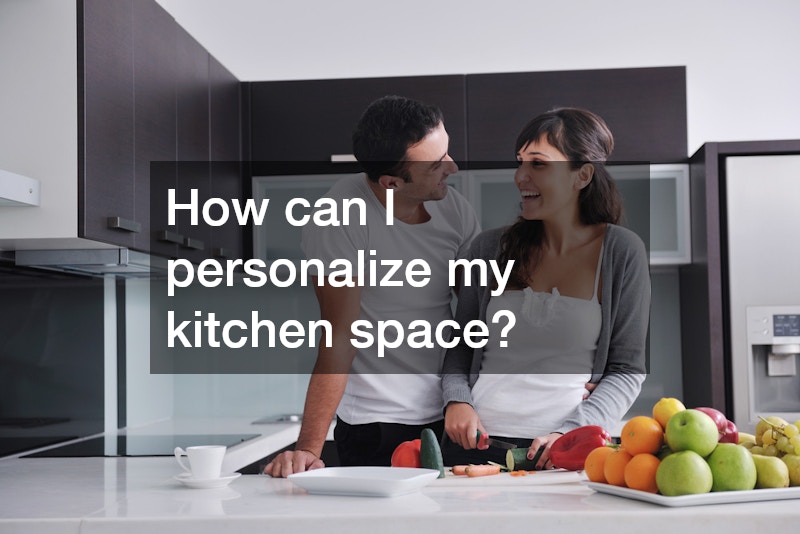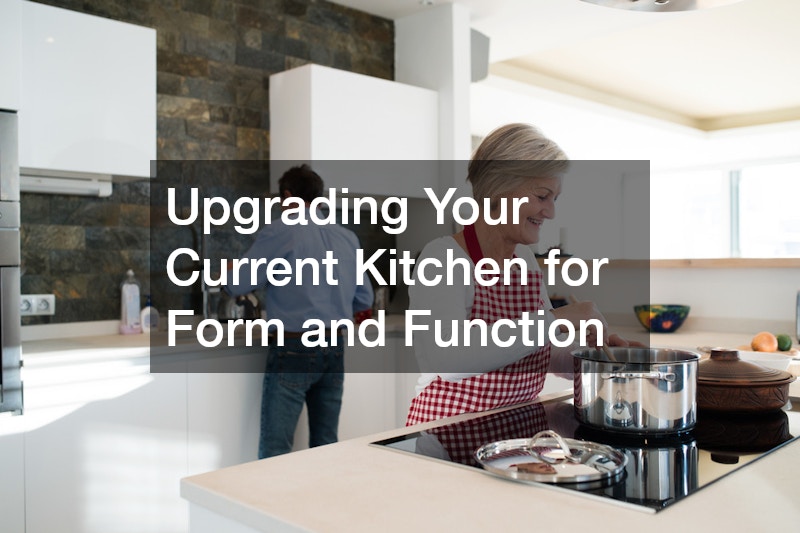Welcome to our comprehensive guide on upgrading your current kitchen, blending both form and function for an enhanced cooking and living experience. This article will address the most common questions and topics surrounding kitchen upgrades, ensuring you have all the information needed to transform your space effectively. Whether your goal is improved aesthetics, better efficiency, or a more personal feel, a kitchen renovation can redefine how you interact with one of the most vital spaces in your home. Working with experienced kitchen remodelers and knowledgeable professionals will help ensure your kitchen is not only stylish but also functional and long-lasting.
How do I assess the current layout of my kitchen?
Evaluating kitchen work zones
A successful kitchen layout depends heavily on its zoning. The primary zones—preparation, cooking, and cleaning—should be arranged logically to minimize unnecessary movement. If you frequently find yourself darting from one end to the other, it’s time to consider rebalancing these zones. The “work triangle” between the sink, stove, and refrigerator should be efficient and uninterrupted. Consulting kitchen remodelers can help you assess whether your current layout supports smooth transitions and task efficiency.
Reviewing traffic flow and space usage
Poor traffic flow can turn even the most beautifully designed kitchen into a frustrating experience. Evaluate how people move through the kitchen and how much space is required to accommodate common activities. In larger households or homes that frequently entertain, ample walkway space and thoughtful placement of islands and counters become essential. Kitchen construction that accounts for such dynamic needs can elevate the space from merely functional to truly enjoyable.
Identifying underutilized areas in your kitchen
Many kitchens have overlooked nooks or wall spaces that could offer more. Vertical spaces above cabinets or beneath countertops can be transformed with additional storage or decorative finishes. Even a small, underused wall can become a display shelf or a spice rack. A cabinet company can help you identify these gaps and offer custom solutions to fully utilize every square foot of your kitchen.
Analyzing current kitchen ergonomics
Ergonomics focuses on how a space accommodates human interaction. Pay attention to how your body engages with countertops, sinks, and appliances. If you’re constantly bending, reaching, or straining, your kitchen may not be ergonomically sound. A well-designed kitchen counter should be at a height that feels natural during prep work, reducing physical fatigue and improving productivity.
Determining the kitchen’s focal points
Your kitchen should have at least one visual anchor—be it a range hood, an island, or a distinctive backsplash. Focal points not only guide the eye but also set the tone for the rest of the design. Terrazzo flooring, with its unique patterns and varied color palettes, is an increasingly popular choice for creating an eye-catching foundation that anchors the room. Likewise, bold cabinet colors or a stunning kitchen counter slab can offer a balance of visual impact and practical use.
What are the best design styles to consider?
Exploring contemporary kitchen design
Contemporary kitchens often feature clean lines, sleek finishes, and minimal clutter. This style emphasizes function with built-in storage, handleless cabinets, and seamless integration of appliances. High-gloss cabinetry, stone or composite kitchen counters, and terrazzo flooring are commonly used to achieve a polished and cohesive look. A cabinet company specializing in modern kitchen design can tailor cabinetry solutions that align with this streamlined aesthetic.
Highlights of a traditional kitchen style
Traditional kitchens offer warmth and familiarity through elements like ornate cabinetry, natural wood tones, and classic backsplashes. Hardwood flooring is a frequent choice in traditional settings due to its warm, inviting appearance. The character and texture of hardwood help create a space that feels both comforting and elegant. Custom millwork and antique-inspired hardware reinforce the nostalgic appeal of this style.
The appeal of farmhouse kitchens
Farmhouse kitchens blend rustic aesthetics with cozy, practical functionality. Think apron sinks, butcher-block counters, open shelving, and vintage-inspired fixtures. Hardwood adds a natural charm that complements the lived-in feeling of a farmhouse design. A seasoned cabinet company can help implement barn-style doors, shaker cabinets, and practical layouts to enhance this homey style.
Integrating a modern minimalist approach
Minimalist kitchens simplify space, keeping only what’s essential. Colors tend to be neutral, surfaces unbroken, and storage hidden. Modular kitchen counters, handleless cabinetry, and energy-efficient appliances define this look. Terrazzo flooring or matte-finished hardwood can lend a soft, elegant touch while keeping the aesthetic clean and unfussy.
Combining styles for a unique look
Many homeowners now opt for transitional designs that borrow elements from different eras. Combining a modern kitchen’s sleek lighting with traditional cabinetry or mixing industrial shelving with farmhouse elements creates a highly personal space. Collaborating with kitchen remodelers and design experts ensures that these combinations feel intentional rather than chaotic.
How do I choose the right appliances for my upgrade?
Prioritizing energy-efficient appliances
Energy-efficient appliances save money and reduce your environmental impact. Look for ENERGY STAR ratings and appliances that offer eco-friendly modes. Induction cooktops, smart refrigerators, and efficient dishwashers are ideal additions for a modern kitchen aiming to balance convenience and conservation.
Selecting appliances for a cohesive kitchen look
Your appliances should complement your kitchen’s aesthetic. Matching finishes—whether stainless steel, matte black, or colored enamel—contribute to a unified look. For example, a modern kitchen might include brushed steel appliances paired with a terrazzo backsplash and slab-style counters for a futuristic yet elegant space.
Pros and cons of integrated vs. freestanding appliances
Integrated appliances blend into cabinetry for a streamlined appearance, while freestanding models offer flexibility and often lower costs. Kitchen remodelers can help evaluate your current space and advise whether integrating appliances is structurally and stylistically viable during your kitchen construction phase.
Latest trends in kitchen appliance technology
Smart ovens that can be controlled by smartphone apps, touch-screen fridges, and voice-activated dishwashers are increasingly popular. These appliances not only offer convenience but also contribute to energy efficiency. Many of today’s appliances are designed with connectivity in mind, making them easy to incorporate into modern kitchens.
Matching appliance functionality with kitchen needs
A family that loves to entertain might need a double oven or wine cooler, while a busy household could benefit from a fast-cooking induction stove. Choosing appliances based on your actual needs helps avoid overspending while maximizing daily comfort and efficiency.
What are some innovative storage solutions?

Utilizing vertical storage efficiently
Vertical storage such as full-height cabinetry and hanging pot racks helps make the most of unused space. Hardwood shelving can double as both storage and design elements, offering a warm contrast to cooler countertop or flooring materials.
Multi-purpose furniture and fittings
Convertible islands, extendable counters, and seating with built-in storage can serve multiple roles. This adaptability is especially useful in compact kitchens or open-concept designs where every piece of furniture must pull double duty.
Planning for drawer and cabinet organization
Organized drawers reduce clutter and save time. Custom dividers, lazy Susans, and soft-close drawer systems create a highly functional space. A cabinet company can provide custom-fit solutions to perfectly match your storage needs and style preferences.
Creative pantry storage ideas
Pantries benefit from rotating shelves, labeled glass jars, and even under-stair alcoves converted for food storage. Pull-out racks and sliding compartments can turn narrow or awkward spaces into practical storage zones.
Incorporating modular storage units
Modular units are great for dynamic lifestyles. They allow your kitchen to grow and evolve with your needs—ideal for families or those who entertain often. Modular cabinetry from a reputable cabinet company can also be tailored to future appliance upgrades or changes in cooking habits.
How can I sustainably upgrade my kitchen?
Using sustainable materials for construction
Sustainable kitchen construction means choosing eco-friendly materials like bamboo, reclaimed hardwood, or recycled metal. Hardwood certified by the Forest Stewardship Council (FSC) ensures your flooring is both beautiful and responsibly sourced.
Incorporating energy-efficient lighting solutions
LEDs are the go-to for energy savings and longevity. Strip lighting under cabinets or pendant lights above an island help provide both task and ambient lighting without increasing your energy footprint.
Water-saving fixtures for eco-friendly kitchens
Aerated faucets, low-flow dishwashers, and smart water meters conserve water and reduce utility bills. Make sure to work with licensed plumbing contractors to install these fixtures correctly and avoid future leaks or pressure issues.
Recycling and waste management in kitchen design
Incorporate hidden compartments for recycling, composting, and general waste. Thoughtful placement encourages eco-friendly habits while keeping the kitchen tidy and efficient.
Solar energy integration for kitchen power
For homeowners looking to reduce energy dependence, integrating solar panels into your home’s power system can significantly offset the consumption of high-powered appliances. Pairing solar energy with energy-efficient designs offers a long-term return on investment.
What should be my lighting strategy?
Task lighting vs. ambient lighting
Task lighting targets specific workspaces such as countertops and sinks, while ambient lighting fills the room with soft, general illumination. A mix of both ensures safety and ambiance.
Choosing between LEDs, halogens, and fluorescents
LEDs offer the best balance of energy savings, color quality, and durability. They work especially well in modern kitchen environments where minimalism and function meet.
Illuminating countertops and workspaces
Use under-cabinet lights or recessed lighting to brighten key work zones. This enhances visibility for tasks like chopping or baking and adds a sense of depth to the kitchen counter.
Incorporating decorative lighting fixtures
Statement lights such as chandeliers, pendants, or sconce lights not only brighten the room but serve as design focal points. Decorative lighting adds layers of texture and personality.
Adapting lighting for mood and setting
Use dimmers and smart controls to adjust brightness throughout the day. Whether hosting guests or preparing a quiet dinner, adaptable lighting lets you change the atmosphere instantly.
Is it beneficial to include smart technology?
Overview of smart kitchen devices
From fridges that track inventory to faucets activated by voice, smart technology improves both convenience and sustainability. These devices often sync with smartphones or tablets to offer real-time control.
Integrating smart appliances with existing systems
Make sure your new smart appliances are compatible with your home network and other devices. This helps avoid connectivity issues and maximizes the convenience of automation.
Costs and benefits of smart kitchens
Though initially expensive, smart kitchens can lower utility costs, reduce food waste, and simplify cooking routines. Think of it as a long-term investment that modernizes and adds value to your home.
Balancing technology with simplicity
Avoid overcomplicating the space with unnecessary gadgets. The key is to adopt technology that improves function, like automated lighting or smart ovens, without overwhelming the user experience.
Future-proofing your kitchen with technology
Select technology platforms that offer firmware updates and scalability. Modular appliances and universal smart hubs can help keep your kitchen tech current for years to come.
How do I budget effectively for a kitchen upgrade?

Assessing the cost of design elements
Major expenses typically include cabinetry, countertops, flooring, and appliances. A good starting point is to consult kitchen remodelers or a cabinet company to get an estimate and prioritize the most impactful upgrades.
Prioritizing spending for maximum impact
Spend more on long-term features like durable kitchen counters or hardwood flooring, and less on trendy, changeable elements like lighting fixtures or accessories.
Saving on hidden costs during remodels
Plumbing installation often uncovers hidden issues that can add to your budget. Having reliable plumbing contractors inspect the system beforehand can save you time and unexpected costs.
Setting realistic timelines and financial goals
Keep timelines flexible and build in a 10–20% contingency for surprises. Talk to kitchen remodelers early in the process to understand how your vision translates into practical timelines and financial plans.
Working with contractors and designers
Hiring licensed professionals—especially for tasks like plumbing installation or flooring—ensures compliance with local building codes and industry standards. Choose kitchen remodelers with a strong track record and clear communication style.
What are some common pitfalls to avoid?
Overlooking practical needs for aesthetics
Don’t let form override function. A gorgeous kitchen without counter space or proper plumbing layout quickly becomes frustrating. Consult with both designers and plumbing contractors to maintain balance.
Ignoring kitchen safety protocols
Sharp corners, non-slip flooring, and proper lighting are essential. If you’re choosing between terrazzo flooring and hardwood, consider slip resistance and maintenance needs to ensure safety.
Misjudging scale and proportion
A massive island in a small kitchen can disrupt flow. Make sure all elements—from counters to light fixtures—are appropriately scaled to fit the space.
Mismanaging project timelines
Delays happen, but clear milestones and contractor communication help avoid project fatigue. Always leave extra time for inspections, especially involving plumbing or electrical updates.
Neglecting future kitchen expansion potential
Design with flexibility in mind. Leave room for future upgrades like a wine cooler, second oven, or additional storage, especially if your family is growing or your habits are evolving.
How can I personalize my kitchen space?

Selecting personal color schemes
Choose colors that reflect your personality and mood. Neutral walls with colorful cabinets or vibrant terrazzo flooring can express style without overwhelming the senses.
Including artwork and decorative elements
Display personal items like framed prints, family photos, or handmade ceramics to add warmth and story. These touches transform a kitchen from a workspace into a lived-in environment.
Customizing cabinetry and finishes
Collaborate with a cabinet company to personalize handles, wood finishes, or inlays. These customized touches make your kitchen distinctly yours.
Adding personal touches with fixtures
Fixtures can be small but powerful expressions of taste. From vintage taps to sculptural lighting, these elements provide subtle but significant flair.
Flexibility in using adaptable kitchen elements
Modular islands, rolling carts, and movable shelves provide the freedom to adapt the kitchen as your needs change. Flexibility is key in making a space feel truly personalized and timeless.
Closing Thoughts
Upgrading your current kitchen to merge both form and function is an exciting yet complex process. By understanding layout dynamics, choosing the right design styles and materials, and personalizing the space, you can create a kitchen that not only serves your cooking needs but also adds value and personality to your home. Keep these essential questions in mind and collaborate with experienced kitchen remodelers, a reliable cabinet company, and skilled plumbing contractors to ensure every detail—from the kitchen counter to the terrazzo or hardwood flooring—is handled with care and expertise. With thoughtful planning and quality execution, your kitchen transformation will be a long-lasting success.





